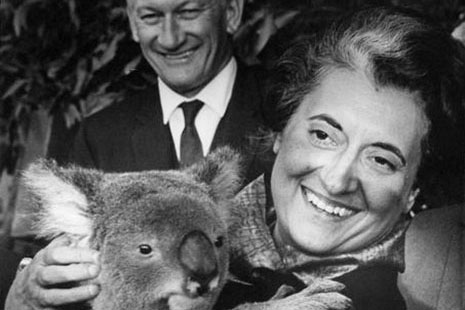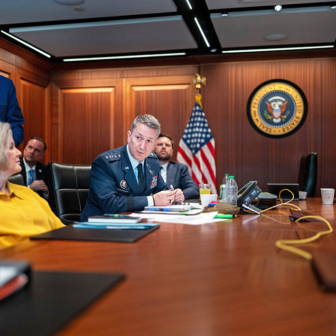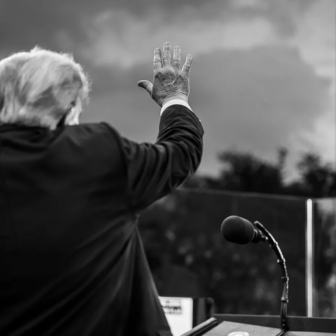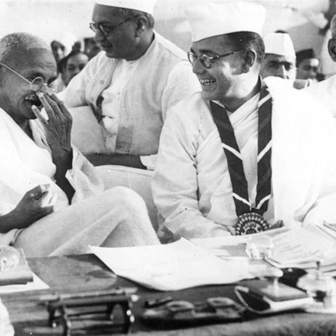JUST WHEN you think you’re on the brink of something good, bad things happen. In this case, young thugs and goons who come out at night to rob and terrify for fun and profit have stumbled across new targets: students and workers from India and other South Asian countries. They work late, have nice electronic gear and (the thinking might go) are poorly equipped to complain. (Ever had your pocket picked in another country? Did you know what to do?)
For as long as India has been independent, Australians with an eye to Australia’s long-term interests have sought to put “substance” into the Australia–India relationship. In the past three or four years, such “substance” seemed to be arriving in the form of wider and deeper human connections, driven mightily (though not entirely) by the 100,000 students from India and its neighbours now studying here.
The robberies and assaults undermine these developments and have taken on a nasty life of their own. They make tasty morsels for a vast, 200-channel Indian television industry, hungry for stories. The attacks have also become a top story in India’s huge newspaper industry, which sells ninety million copies a day in a dozen languages.
Media pingpong is a great game: Australian outlets pick up Indian stories, which bring out wackier voices in Australian public life, which in turn generate equally wacky Indian replies. And all of this increases the possibility of copy-cat crimes.
Why should these attacks and their handling be of very, very serious concern to Australians who look to the future of this country? Why should far-sighted Australians want a relationship with India that has more “substance”? The answer is enlightened self-interest.
Australia is a population pimple on the Asia–Pacific elephant. It needs friends with genuine common interests. Since the days of Ben Chifley and Jawaharlal Nehru, wise folk in both countries have seen that Australians and Indians have unique things in common and can work with each other as few countries can.
Only last week, for example, Australia’s best known election analyst, Malcolm Mackerras, celebrated the fact that the Indian political system has overcome a deficiency attributed to the Westminster model of government. Manmohan Singh, India’s respected prime minister, sits in the upper house of parliament. The fact that that house is indirectly elected – by members of state legislatures – means that India can do something usually associated with the presidential systems inspired by the United States: it can bring into government outstanding people from other walks of life who would not fight and could not win a down-and-dirty election. India also has election procedures – especially its electronic voting machines – which should be the envy of electoral democracies everywhere. On the Australian side, we run things like schools, universities, museums, sporting bodies and a host of other institutions from whose practices and experience India can profit.
In a week when the world remembers – and the Chinese Communist Party encourages everyone to forget – the twentieth anniversary of the Tiananmen massacres, it’s worth recalling that India staged a different political drama in 1989. Rajiv Gandhi’s Congress government, which held a record majority of more than 400 seats in a 545-seat house, called general elections, was defeated and surrendered office without complaint.
Such common conventions of government, reinforced by India’s most recent elections, together with rapidly growing trade, give us a framework on which much should be built. Until now, this skeleton has lacked daily, material connections. One hundred thousand students now provide the potential for those flesh-and-blood links. The commercial opportunities they discover, the holidays their parents take, the friendships and marriages they make and their general to-ing and fro-ing bring Australia and India into concrete relationships that benefit both countries.
There is also language. About 5 per cent of Indians use English extensively – that’s 60 million people, or roughly three Australias. It is a substantial base on which to build relationships, a far more extensive headstart than Australia has in other Asian, European or Latin American countries. The potential to partner India in global cultural industries is immense. And India’s global credentials – three Booker prizes to Indian authors in the past eleven years and an Academy Award – are substantial.
What does this elusive “substance” mean in international relations? And why is the recent growth of the Indian student population so important for providing it? Substance means diverse and deep interests. It means trade – and not merely volume but diversity. It means communications – constant, extensive exchange of ideas and people. It means some common values and expectations – like regular elections and free (and therefore sometimes wacky) media. And it means a broadly shared view of international interests.
In the past, far-sighted members of Australia’s foreign affairs elite sought to enhance the relationship with India because they saw the advantages. But personal equations often got in the way. Robert Menzies and Jawaharlal Nehru talked past each other. To Nehru, Menzies was a second-rank imperialist whose small talk turned too often to cricket; to Menzies, Nehru was an underminer of the British Empire who’d had the Cambridge education that one suspects Menzies craved. Mrs Gandhi was prickly; Morarji Desai was stiff and of another era. Only with the arrival of Bob Hawke and Rajiv Gandhi did promising personal chemistry enter the equation, but that ended with Rajiv’s defeat in 1989 and murder in 1991, the same year Hawke gave way to Keating.
Even in the Menzies era, far-seeing Australian public servants like Sir Walter Crocker – twice high commissioner to India, who died at 100 in 2002 – had a vision and a fascination; in Crocker’s case, it enabled him to write a fine biography of Nehru. Nehru: A Contemporary Estimate, first published in 1966, was republished last year at the instigation of a Crocker admirer, the distinguished Indian scholar Ramachandra Guha. The book sold well enough to be reprinted a few months ago.
On the other side, India’s high commissioner to Australia from 1953–56, General K.M. “Kipper” Cariappa, the first Indian to command the Indian army, made himself feistily at home in Australian public life. According to historian David Walker, Cariappa was able to “expound the Upanishads and execute a perfect fox trot” with equal ease – and simultaneously. Walker tells us that on one legendary occasion in Gundagai, “Cariappa and his Sikh driver found the local war memorial neglected and overgrown with weeds. These two spectacular figures got to work with spades and hoses and soon had the memorial looking ship-shape.” Cariappa reminded townspeople, who came to see what was going on, about the need to respect the war dead. He had fought in the Middle East and Burma, on the same side as Australians.
In Cariappa’s time and until the 1990s, however, economic and global forces made Australia and India look in different directions. India’s economy grew like a snail in a straitjacket, and its foreign-policy outlook was northwest, towards the Soviet Union, Europe and North America. Australia tended to value its US alliance above all else.
Since the 1990s, India’s liberalising, fast-growing economy has brought large benefits for Australia. It has been the fastest growing destination for Australian exports since 2001, ranking sixth among trading partners in 2007–08.
We share intense environmental problems. A shortage of water plagues us both; we both need and consume vast quantities of energy. Australia has the capacity to fuel India. India has the capacity to show Australia how to be economical. (Watch a village woman cook a meal, if you seek models on which to base mindsets about careful use of resources.)
A rich, interactive relationship with a country of 1140 million people (sixty Australias) growing at 6 per cent in the recession year of 2008–09 is worth having. The current crop of Indian students forge links that will make trade diversify and grow. The presence of those students promises to provide the “substance” that has eluded the Australia–India relationship. The number of Indian students has grown by 40 per cent a year since 2002. Today, if there are 100,000 Indian students studying in Australia, their fees and living expenditure are worth about $3.5 billion a year.
To minimise further harm to students and to the India–Australia relationship, a number of things need to happen. Educational institutions need to identify the best support systems for their international students and ensure such systems are universally applied. We know there are good and bad operators: the best need to be imitated; the worst need to be shamed and made to improve.
Part of the problem lies in the fact that Australian higher education has been inadequately funded for fifteen years. Large class sizes, a shortage of accommodation and the need of cash-strapped institutions to trawl for fee-paying students reduce their ability to provide the tender loving care that an alma mater (literally, a bounteous mother) should. The trawling, too, means that students from small towns, less familiar with big cities and foreign ways, are increasingly among the cohort of international students. They need more support, not less; but less is what’s available.
More effective help to find suitable accommodation and more campus-based accommodation are two ways to improve conditions. Visa rules also need to be examined. International students are allowed to work for a fixed number of hours each week, but their visa conditions usually require them to be enrolled full-time in a course too. So you study forty hours a week and do paid work for another twenty hours, which is usually at night because classes are in the daytime. (You need, remember, to have $30–40,000 a year to pay your fees and your bills). And you don’t want to tangle with “authorities” in case they decide you have violated your visa conditions. To ease some of these pressures, it might make sense to allow part-time enrolments.
AT DEEPER, longer-term levels, more Australians need to get a grasp of India. It is not easy to learn about India and its neighbours in an Australian educational institution today. The recently inaugurated $62 million National Asian Languages and Studies in Schools Program explicitly excludes study of India. Only those wanting to study China, Indonesia, Japan and Korea may apply. Twenty years ago you might have found fifteen universities that could help you if you wanted to study India in Australia; today you’ll be lucky to find three. No wonder officials and spokespeople seem ill at ease in trying to talk about the problems of students from South Asia. There aren’t enough people in Australian public life who know Kannada from Canada.
The attacks on students reinforce stereotypes. Indians get described as poor, peaceful and non-confrontational, living in crowded conditions, likely to bring down house prices and push up air, water and energy consumption. Australians, on the other hand, get branded as loud-mouthed, bullying, racist braggarts. Stereotypes are substitutes for knowledge, but they will get bellowed with abandon unless quick, clever and enduring steps are taken to make the night safe and punish goons and thugs.
You might have noticed an irony in the terms: goons and thugs. Good Indian words enriching English: goondahs – bad characters, hired toughs; thugs – the bandits who strangled their victims with a deftly twirled handkerchief. In India these days, the same sort of people might be known as “Char Sau Biis” – 420s, after Section 420 of the criminal code which deals with nasty known offenders.
Another thing to remember is this. When you mess with India, you mess with people who have the professional and financial capacity to pursue you relentlessly through law courts and international forums. India exports outstanding lawyers, financiers and IT professionals. Two of the world’s top ten billionaires are Indians, according to the Forbes list. There are no Chinese in the top ten. Or Australians. You want to be friends of India, not antagonists.
The India–Australia relationship is on the cusp of something good, deep, long-standing and mutually beneficial – genuine “substance.” We must not let Australia’s Section 420s wreck the chance. •




